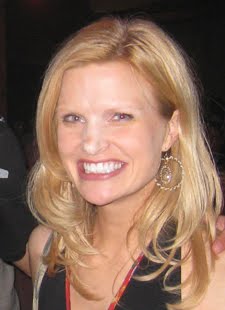So, what does this mean? Consider the closer the kicker of the team. No reliever should be drafted until the 10th round. There isn’t a big difference between the No. 5 closer and the 15th. You’re much better off getting a decent starter who will give you 1-2 starts per week than a really good reliever.
Last year, Sports Radio 610 afternoon host Matt Jackson was in a league with a guy who drafted six closers with the hopes of owning the market and trading them all for offense. That backfired, and he had to drop them. Don’t be that guy.
Here are a few starters of value (in mixed leagues). These are pitchers who should still be available in the late rounds, like 10 or later. Sure, I could recommend Tim Lincecum or Johan Santana, but you already know they are studs.
John Danks – good late-round pickup. Finished 2008 with a 3.32 ERA. Should post 15+ wins in 2009.
Chris Carpenter – another late rounder with high upside. There are health risks, but he’s showing this spring his rehab was successful. Won’t get a lot of strikeouts, but improves your ERA and WHIP.
Erik Bedard – posted a 3.67 ERA despite a nagging injury. Should bounce back and put up solid numbers.
Matt Garza – young pitcher with great potential. Strikeout numbers expected to increase in 2009.
Justin Masterson – will likely go undrafted as he is expected to start the season in the bullpen or in Triple A, but keep your eye on him. The Red Sox have a fragile starting rotation, so Masterson should eventually earn a starting spot.
 2008 fantasy MVP announced
2008 fantasy MVP announcedHere I am with Houston Astros first baseman Lance Berkman, congratulating him on earning MVP honors for my 2008 fantasy team, Lil Bow Wow. He was shocked and speechless. My only regret is not having a huge trophy with me when we took this photo. While I picked Berkman in the third round last year (21st overall pick), this season he's a top-15 pick.
Preparing for an average draft?
With tip sheets available on every fantasy web site, there is no lack of information available. Probably the most common cheat sheet used is the list of players and their average draft position (ADP). This is possibly the biggest mistake you can make as a general manager (besides auto pick or drafting five relievers). I’ve always thought people were average. So, do you really want to use the average draft ranking compiled by average people?
Don’t get me wrong, the ADP can be very helpful. It can help you project if a player you want will be taken in the third round, or if you should really take him in the second. Again, it provides insight into what the average general manager does.
Value is relative
A good draft requires you to understand relative draft value by position. Take shortstop, for instance. There are only a handful of elite shortstops – Hanley Ramirez, Jimmy Rollins and Jose Reyes. And then there’s everybody else. So, a top-three shortstop is a lot more valuable than a top-three outfielder. So before you draft, take a look at where the magic line is from all-star to alright. And while I think you need at least two excellent starting pitchers and outfielders, there are so many decent ones available. So you’re better off getting a top shortstop and third baseman.
Have questions? E-mail Erin at erskelley@yahoo.com


Erin,
ReplyDeleteI was confused when I read your first paragraph, but then I remembered this was about fantasy baseball, which I don't follow, except for what you and Spencer tell me. Have you given any thought to a theme song for your blog? What about .38 Special's "Fantasy Girl?"